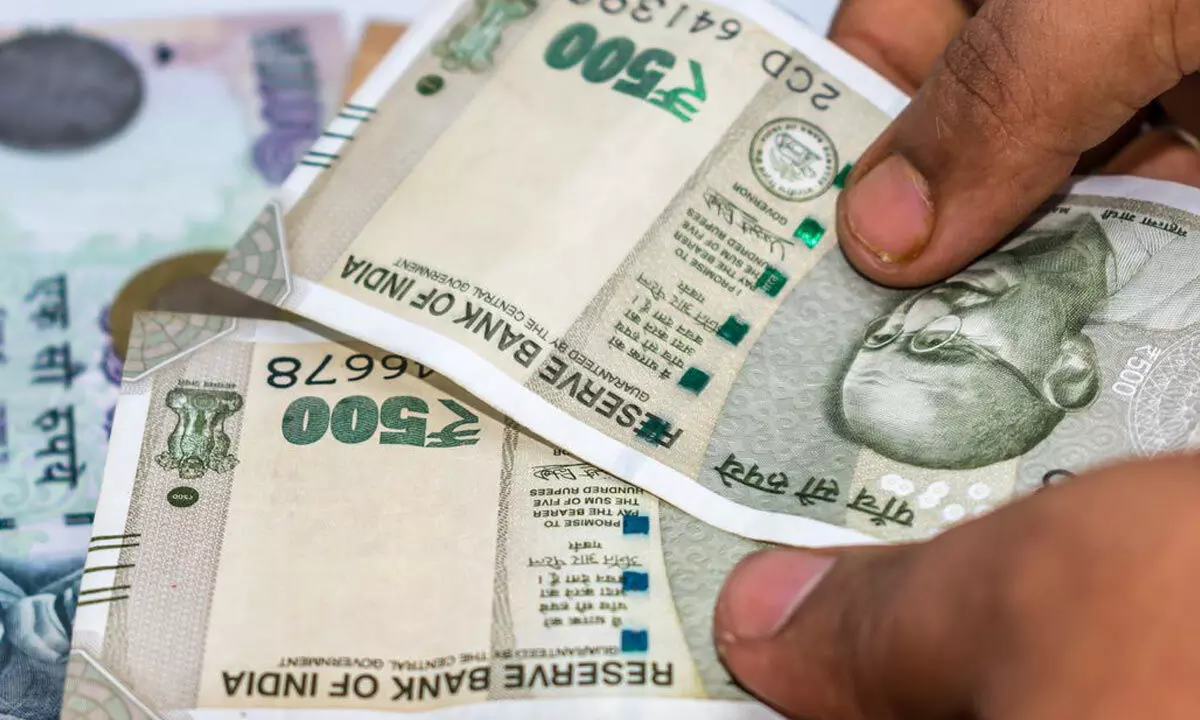White Paper on Economy: NDA under PM Modi nursed banking sector from sickness to health
Share :

Representational Image
The National Democratic Alliance (NDA) government, led by Prime Minister Narendra Modi nursed the Indian banking sector from sickness to health, said the 'White Paper on Economy', tabled in the Parliament by Union Finance Minister Nirmala Sitharaman on Thursday.
New Delhi: The National Democratic Alliance (NDA) government, led by Prime Minister Narendra Modi nursed the Indian banking sector from sickness to health, said the 'White Paper on Economy', tabled in the Parliament by Union Finance Minister Nirmala Sitharaman on Thursday.
"One of the most infamous and important legacies of the United Progressive Alliance (UPA) government led by former Prime Minister Dr Manmohan Singh was the banking crisis," it said.
Sitharaman, while presenting the Interim Budget for 2024-25 said the government will come out with a 'White Paper' on the state of economy in 2014 when the National Democratic Alliance (NDA) took over and the corrective measures taken over the last ten years and the current state of the country’s economy.
"The banking crisis was one of the most important and infamous legacies of the UPA government. When the Vajpayee-led NDA government took office, the Gross Non-Performing Assets (GNPA) ratio in Public Sector banks was 16.0 per cent, and when they left office, it was 7.8 per cent," the 'White Paper' said.
According to the White Paper, in September 2013, the GNPA including restructured loans, had climbed to 12.3 per cent largely because of political interference by the UPA government in the commercial lending decisions of public sector banks.
Worse, even that high percentage of bad debts was an underestimate, it added.
"The banking crisis in 2014 was massive, and the absolute sum at stake was too large. Gross advances by public sector banks were only Rs 6.6 lakh crore in March 2004. In March 2012, it was Rs 39.0 lakh crore. Further, not all problem loans were recognised. There was much under the hood.
"According to a Credit Suisse report published in March 2014, the top 200 companies with an interest coverage ratio of less than one owed about Rs.8.6 lakh crore to banks. Nearly 44 per cent of those loans (Rs.3.8 lakh crore) were yet to be recognised as problem assets. That alone would have added another 6.7 per cent to the GNPA ratio. In 2018, in a written response to a Parliamentary Panel, a former Governor of the Reserve Bank of India, stated 'a larger number of the bad loans were originated in the period 2006-2008'."
"In the past ten years, the government has revitalised the stagnant financial sector and overhauled the credit ecosystem within the economy, bringing about significant improvements," the White Paper said.
"Implementation of the Insolvency and Bankruptcy Code (IBC) and measures implemented by the RBI and the government to strengthen the balance sheets of the banking sector (such as the Asset Quality Review, Prompt Corrective Action Framework, merger and recapitalisation of banks) led to a decline in the ratio of the GrossNon-Performing Assets as a proportion of Gross advances to a multi-year low of 3.2 per cent in September 2023. The restored profitability of public sector banks then and now tells its own story of rescue, recovery and rejuvenation," it added.
According to the White Paper, the net interest margin of public sector banks in FY 2022-23 went up to 2.72 per cent (2.45 per cent in 2013-14), Return on Assets 0.79 per cent (0.50 per cent) and Return on Equity 12.35 (8.48 per cent).













